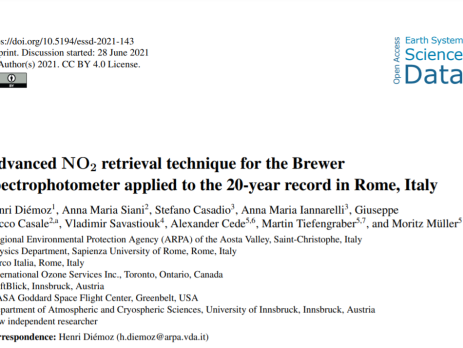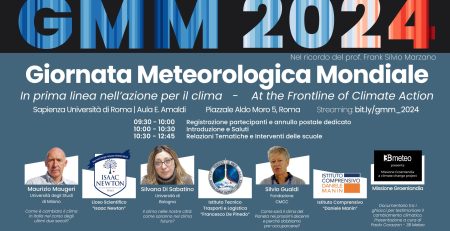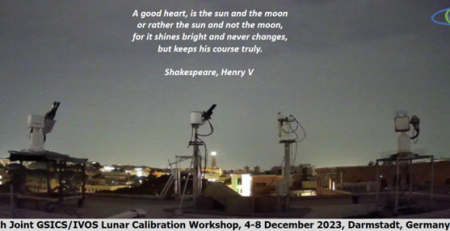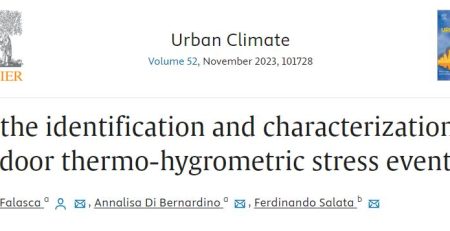Article published on Earth System Science Data: Advanced NO2 retrieval technique for the Brewer spectrophotometer applied to the 20-year record in Rome, Italy
Abstract: A re-evaluated data set of nitrogen dioxide (NO2) column densities over Rome for the years 1996 to 2017 is here presented. This long-term record is obtained from ground-based direct sun measurements with a MkIV Brewer spectrophotometer (#067), further reprocessed using a novel algorithm. Compared to the original Brewer algorithm, the new method includes updated NO2 absorption cross sections and Rayleigh scattering coefficients, and accounts for additional atmospheric compounds and instrumental artefacts, such as the spectral transmittance of the filters, the alignment of the wavelength scale and internal temperature. Moreover, long-term changes in the Brewer radiometric sensitivity are tracked using statistical methods for in-field calibration. The resulting series presents only few (about 30) periods with missing data longer than one week and features NO2 retrievals in more than 6100 days, covering nearly 80 % of the considered 20-year period. The high quality of the data is demonstrated by two independent comparisons. In a first intensive campaign, Brewer #067 is compared against another Brewer (#066), recently calibrated at the Izaña Atmospheric Observatory through the Langley method and there compared to reference instrumentation from the Network for the Detection of Atmospheric Composition Change (NDACC). Data from this campaign show a highly significant Pearson’s correlation coefficient of 0.90 between the two series of slant column densities, slope 0.98 and offset 0.05 DU (1.3×1015 molec cm−2). The average bias between the vertical column densities is 0.03 DU (8.1×1014 molec cm−2), well within the combined uncertainty of both instruments. Brewer #067 is also independently compared with new-generation instrumentation, a co-located Pandora spectrometer (#117), over a 1-year long period (2016-2017) at Sapienza University of Rome, showing linear correlation indices above 0.96 between slant column densities, slope of 0.97 and offset of 0.02 DU (5.4×1014 molec cm−2). The average bias between vertical column densities is negligible (-0.002 DU or -5.4×1013 molec cm−2). This, incidentally, represents the first intercomparison of NO2 retrievals between a MkIV Brewer and a Pandora instrument. Owing to its accuracy and length, the Brewer data set collected in Rome can be useful for satellite cal/val exercises, comparison with photochemical models, and for better aerosol optical depth estimates (NO2 optical depth climatology). In addition, it can be employed to identify long-term trends in NO2 column densities over a metropolitan environment, during two decades witnessing important changes in environmental policies, emission loads and composition, and the effect of a worldwide economic recession, to offer just a few examples. The method can be replicated on the more than 80 MkIV spectrophotometers operating worldwide in the frame of the international Brewer network. The NO2 data set described in this manuscript can be freely accessed at https://doi.org/10.5281/zenodo.4715219 (Diémoz and Siani, 2021).

















